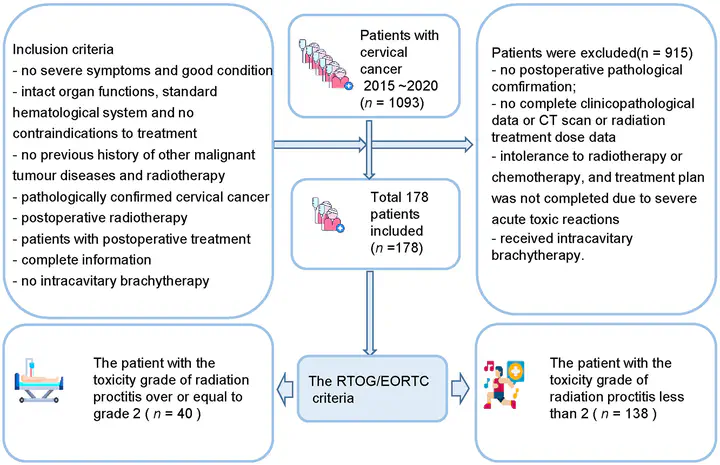Development and validation of an interpretable radiomic nomogram for severe radiation proctitis prediction in postoperative cervical cancer patients

Abstract
Radiation proctitis is a common complication after radiotherapy for cervical cancer.
Unlike simple radiation damage to other organs, radiation proctitis is a complex disease closely related to
the microbiota. However, analysis of the gut microbiota is time-consuming and expensive. This study aims to
mine rectal information using radiomics and incorporate it into a nomogram model for cheap and fast prediction
of severe radiation proctitis prediction in postoperative cervical cancer patients.
Methods: The severity of the patient’s radiation proctitis was graded according to the
RTOG/EORTC criteria. The toxicity grade of radiation proctitis over or equal to grade 2 was set as the model’s
target. A total of 178 patients with cervical cancer were divided into a training set (n = 124) and a
validation set (n = 54). Multivariate logistic regression was used to build the radiomic and non-raidomic
models.
Results: The radiomics model [AUC=0.6855(0.5174-0.8535)] showed better
performance and more net benefit in the validation set than the non radiomic model
[AUC=0.6641(0.4904-0.8378)]. In particular, we applied SHapley Additive exPlanation (SHAP) method for the
first time to a radiomics based logistic regression model to further interpret the radiomic features from
case-based and feature-based perspectives. The integrated radiomic model enables the first accurate
quantitative assessment of the probability of radiation proctitis in postoperative cervical cancer patients,
addressing the limitations of the current qualitative assessment of the plan through dose volume parameters
only.